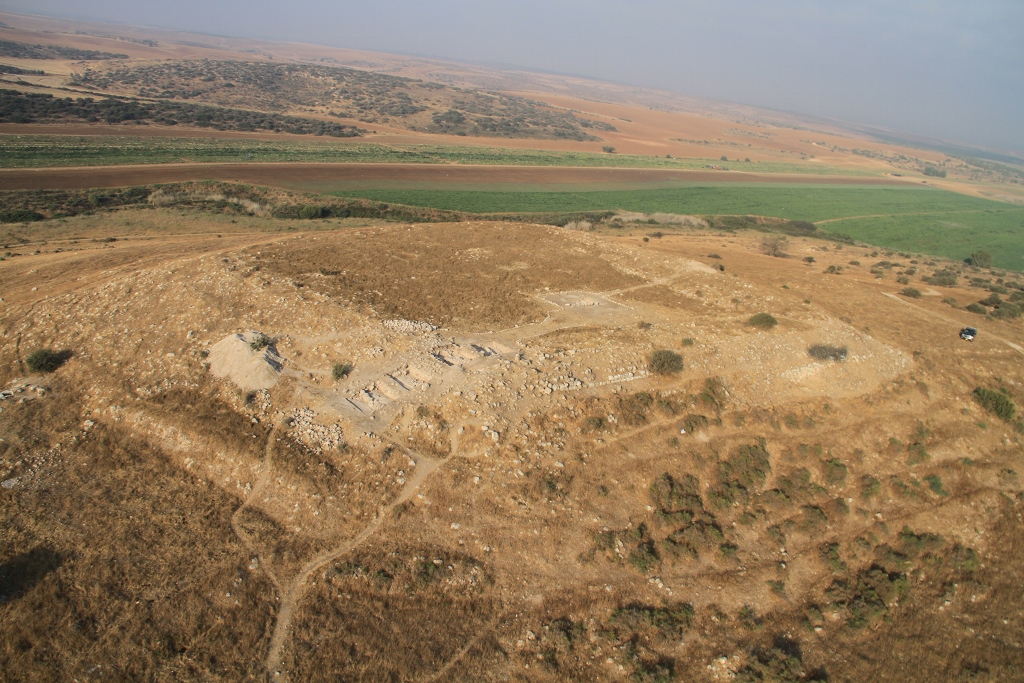 TEL BURNA, Israel – Archaeologists are increasingly confident that they have discovered the remains of Libnah—an ancient city in Israel that is mentioned multiple times in the Bible.
TEL BURNA, Israel – Archaeologists are increasingly confident that they have discovered the remains of Libnah—an ancient city in Israel that is mentioned multiple times in the Bible.
Since 2009, researchers have studied the remains of an ancient village at a dig site named Tel Burna, located 20 miles southwest of Jerusalem. The area was once a strategic border region between ancient Israel to the east and the Philistines to the west.
Though the Tel Burna site has yielded important archaeological findings, the true identity of the site has long been uncertain.
“The identification of the site has been debated for more than a century,” Dr. Itzhaq Shai, director of the Tel Burna dig project, told Popular Archaeology. “There are scholars who have claimed that Tel Burna is biblical Libnah, which was mentioned several times in the Bible. This identification was based mainly on geographical and historical arguments.”
The ancient city of Libnah played notable roles in several Old Testament Bible passages. Moses and the Israelites visited Libnah during the Exodus from Egypt (Numbers 33:20-21). Joshua and the Israelite army conquered Libnah during their conquest of the Promised Land (Joshua 10:29-30), later devoting the town to Aaron’s descendants, the priests (Joshua 21:13). And, according to 2 Chronicles 21:9-10, the Edomites and the inhabitants of Libnah revolted against Jehoram, the evil king of Judah.
“Then Jehoram went forth with his princes, and all his chariots with him: and he rose up by night, and smote the Edomites which compassed him in, and the captains of the chariots,” 2 Chronicles states. “So the Edomites revolted from under the hand of Judah unto this day. The same time also did Libnah revolt from under his hand; because he had forsaken the Lord God of his fathers.”
Experts now agree that the Tel Burna site was an important location during biblical times, primarily because of its location.
“The site of Tel Burna is located in the Shephelah region, which served as a border between the kingdoms of Judah and Philistia in the Iron Age,” explains The Tel Burna Excavation Project’s website. “A fertile area that supported agricultural production, the region became known as the breadbasket of the south. … Survey finds from the 2009 season indicate that the city was an important entity in the Bronze and Iron Ages.”
Is the Tel Burna site actually the ruins of the ancient city of Libnah? According to archaeologists, it most likely is.
“To date, there are other candidates for the location of ancient Libnah, including nearby Tel Zayit,” Shai explained. “However, the exposed archaeological remains at Tel Burna support this identification, with both the geographical, survey and excavation data fitting well with what we know and expect from a border town in the Iron Age.”
Artifacts discovered at the site, including beads, seals, figurines, and ceramic vessels, have been dated to the 9th and 8th centuries B.C.—a period known as the Iron Age. This time frame closely coincides with the Bible’s historical accounts of Libnah.
“The Iron Age remains attested to the importance of the settlement at the site and that it was a fortified Judahite border site facing the Philistines in the west,” Shai stated.
As a fortified city, Libnah was most likely a strategic border city from which the Israelites fended off attacks from the neighboring Philistines.
“The Iron Age II (1000 – 586 BCE) wall reflects the role of this site during this period,” Shai said. “The location of Tel Burna—midway between Gath, the dominant Philistine city in the Iron Age IIA (1000 – 925 BCE), and Lachish, the main Judahite city, monitoring the road along Nahal Guvrin, with visibility all the way to the coastal plain—would account for the investment of the central authority of Judah in establishing such a walled city so close to the city of Lachish.”
Other archaeological finds in Israel have recently confirmed notable biblical accounts. As previously reported, a 3,000-year-old stone slab recently on display in New York City corroborated the biblical account of King David. Other recent finds include an ancient synagogue in Israel where Jesus may have taught and the possible location of King Herod’s palace—where Jesus stood trial before being crucified.
Become a Christian News Network Supporter...


